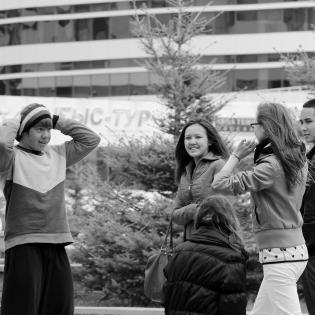Are All Lies the Same?
In this lesson, learners discuss different types of lies and rate them in their severity and damage to others.
The learner will:
- analyze whether leaving out information is dishonest.
- discuss and come to a consensus on the most damaging "lies."
Instructions
Anticipatory Set
Say to the learners, "Imagine you had plans with a friend to get together tonight. The friend approached you at lunch and said, "I can't go with you tonight." Then the friend walked away quickly. What immediate questions would you like to ask your friend?" Discuss a variety of possible reasons for the lack of information provided by the friend. Then ask whether the friend lied to you. Discuss whether withholding information is honest.
Define honesty as "fairness and straightforwardness in conduct."
There are several types of "lies." These types of lies do not all have the same level of dishonesty to them. Read aloud the list of twelve types of lies below. Tell the learners they are going to rate these types of lies by standing on a line.
Use a piece of tape or draw an imaginary line across the room and indicate which end of the line is one (least harmful type of dishonesty) and which end of the line is ten (the most harmful type of dishonesty). Tell them they will show their personal rating by standing somewhere on the line after you read a type of lie. They should be honest about personal impressions and be ready to discuss why they rated the lie as they did.
Read one item from the list of types of lies. The learners stand somewhere on the line from one to ten to indicate how gentle or harmful they think the lie is. Then discuss their ratings.
Repeat for each type of lie on the list.
The most discussion will arise when they stand in different places on the line. We each bring different experiences, and we can learn from others how lies can seem harmless and still cause damage to others.
Types of Lies
- bald-faced lie (telling a lie that everyone can see, e.g., the crumbs are on your face)
- bluffing (such as in a card game)
- exaggerating
- polite lie (to avoid hurting a friend e.g., nice haircut)
- temporary lie (surprise party)
- lying to avoid punishment
- omission (leaving out information with the purpose of misleading)
- telling a story/repeating information you aren't sure is true
- perjury (lying in court or sworn statement)
- sarcasm or tall tale (using untruth to express truth)
- advertisers lying about products
- harmful lies that help no one
After rating all the lies, discuss their experiences of the activity. "Was there a consensus on the most harmful two types of lies and the least harmful two?" and "Why do we have the same or different responses on some of these?"
Philanthropy Framework
-
Strand PHIL.II Philanthropy and Civil Society
-
Standard PCS 01. Self, citizenship, and society
-
Benchmark MS.4 Describe the characteristics of someone who helps others.
-
-
Standard PCS 02. Diverse Cultures
-
Benchmark MS.2 Describe the importance of hearing all voices in a community and respecting their right to be heard.
-
Benchmark MS.3 Give an example of how philanthropy can transcend cultures.
-
-
-
Strand PHIL.III Philanthropy and the Individual
-
Standard PI 01. Reasons for Individual Philanthropy
-
Benchmark MS.3 Identify and give examples of stewardship in cultural traditions around the world.
-
Benchmark MS.4 Identify and describe the actions of how citizens act for the common good.
-
Benchmark MS.5 Describe the responsibility students have to act in the civil society sector to improve the common good.
-
-
